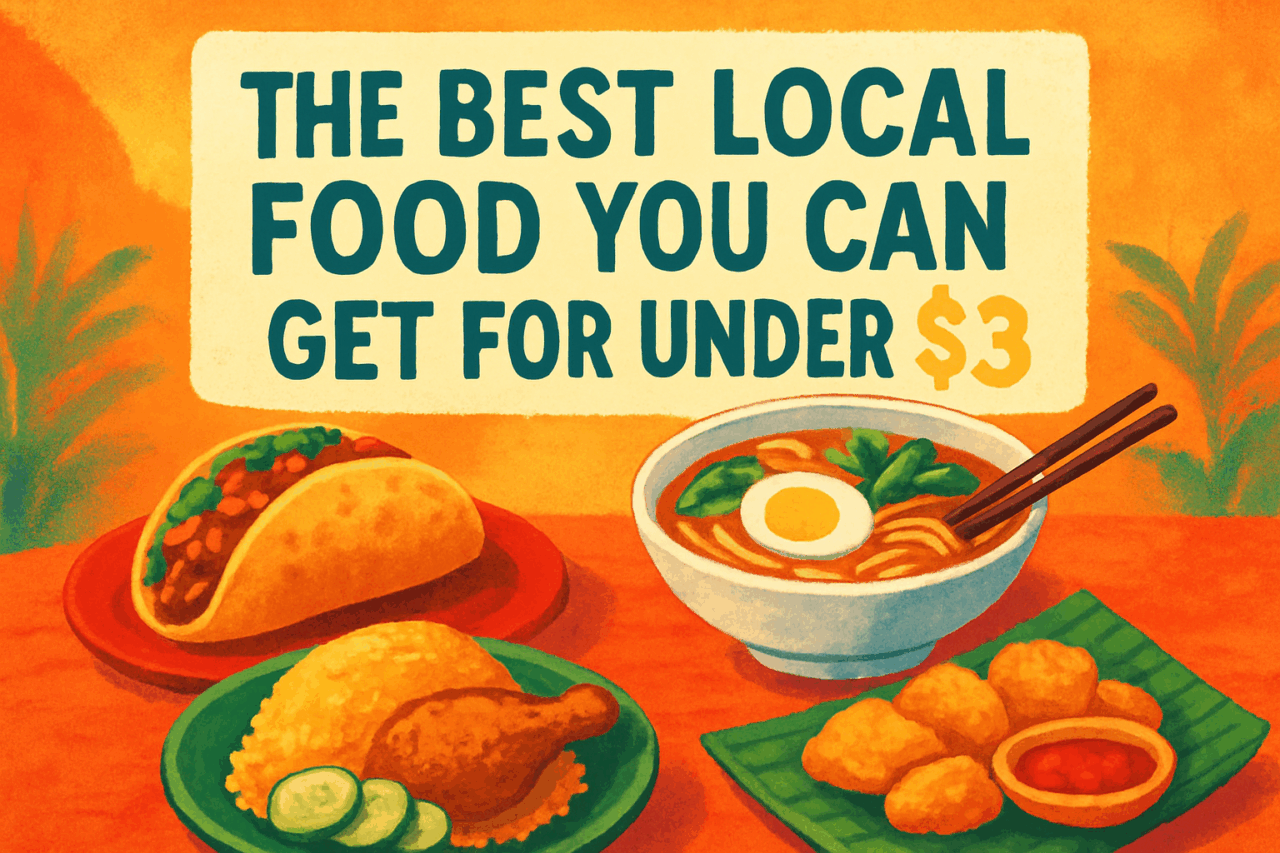The Best Local Food You Can Get for Under $3 on Koh Samui
By Vilhelms
If you squint just so at the haze on Koh Samui’s horizon, you might mistake the island for a mirage—one conjured not by the sea, but by the collective daydreams of travelers in search of paradise. Yet beneath the palm-fringed gloss and Instagram shimmer, Samui’s true heart pulses in open-air kitchens and battered carts, where $3 buys not only a meal but a fleeting glimpse into the island’s soul.
As a habitual wanderer with a weakness for markets and a deep respect for the magic wrought by local cooks, I set out to answer a simple question: what is the best food you can get in Samui for the price of a cup of coffee back home? The answer, as it turns out, is as layered as a bowl of tom yum—fiery, surprising, and deeply satisfying.
Street Markets: Where the Story Begins
It’s difficult to overstate the importance of the market in Thai life. Here, commerce is a kind of theatre, and the clatter of woks is an overture to the evening’s feast. Fisherman’s Village Walking Street (Bophut Walking Street) is as much a social ritual as a marketplace; you’ll find families, couples, and solo dreamers alike, all weaving between stalls heaped with grilled meat, tropical fruit, and the aromatic promise of dinner.
Pro tip: Arrive early, before six, for the best selection—and to watch the vendors set up, a choreography as practiced as it is unhurried.
Som Tam: The Humble Papaya Salad
For a mere 50 baht (about $1.40), you can procure a plate of som tam so lively it might well dance off your table. Unripe papaya, carrot, tomato, and green beans are pounded together with a mortar and pestle, then doused with fish sauce, lime, and a whisper (or a shout) of chili. My favorite rendition appears nightly at Mae Nam Night Market (location here), where the cook, a woman of few words and infinite grace, grinds each salad to order. Eating her som tam is an act of joyful surrender—part culinary adventure, part endurance test.
Historical aside: Som tam, though often thought of as quintessentially Thai, actually hails from Laos. Like many dishes on Samui, it is an edible record of the island’s complex migrations.
Gai Yang and Sticky Rice: The Power Couple
If there is a universal language, it might be the smell of grilled chicken. On Samui’s side streets—especially near Lamai Fresh Market (location)—you’ll find skewers of gai yang (grilled chicken) arrayed with geometric precision over glowing coals. The chicken, marinated in lemongrass and coriander root, achieves that rare equilibrium: crisp skin, tender flesh, and a subtle smokiness that lingers long after the last bite.
Paired with a pyramid of sticky rice (likely wrapped in banana leaf), this meal will set you back another $1.50. If you’re lucky, you’ll get a side of sweet chili sauce—redolent of garlic and sugar, the culinary equivalent of a wink.
Khanom Jeen: Breakfast of Champions
Mornings on Samui are best spent at Chaweng Market (location), where the air is thick with the scent of coconut and the purr of motorbikes. Here, I discovered khanom jeen, rice noodles served with an array of curries and fresh herbs, for about 60 baht ($1.75). There’s a quiet artistry to the way locals layer their plates—first noodles, then a ladleful of green curry, a handful of bean sprouts, a scattering of pickled cabbage.
Eating khanom jeen at a plastic table, surrounded by office workers and schoolchildren, I felt oddly at home. Food, after all, is the original passport.
The Unassuming Hero: Roti
For those late-night cravings (or breakfast, depending on your sense of decency), nothing beats the island’s ubiquitous roti. These flaky pancakes, fried to golden perfection and showered with condensed milk or banana slices, are a legacy of South Asian traders who left their mark on Thai cuisine. At Roti Pa Yai (location), a smile and 30 baht (less than $1) will earn you one, hot from the griddle.
Dry humor aside: Roti, like all good things, is best eaten standing up, with sticky fingers and a sense of mild shame at your own gluttony.
A Word on Etiquette (and Adventure)
In Thailand, food is rarely solitary. Pull up a plastic stool, share a table, and don’t be shy with the condiments—chili flakes, vinegar, and fish sauce are there to be used, not admired. Most vendors speak enough English to help you navigate the menu, but a smile and a polite “khop khun krap/ka” (“thank you”) go a long way.
If you’re tempted to stick to well-trodden tourist spots, resist. The best meals often lurk just outside the spotlight—down an alley, or at a stall where you’re the only foreign face in sight. Trust your nose, your instincts, and the gentle wisdom of the woman ladling curry at dawn.
Final Thoughts: More Than a Meal
On Koh Samui, $3 is not just a budget—it’s an invitation. To taste, to wander, to relinquish your certainties and let dinner surprise you. Whether you’re burning your lips on som tam or lingering over roti beneath a flickering streetlamp, you are, for a moment, part of the island’s living story.
And if you find yourself, as I did, marveling at the alchemy that transforms the humble and overlooked into the unforgettable—well, perhaps that too is worth the price of admission.
Where to Start Your Culinary Adventure:
- Fisherman’s Village Walking Street
- Mae Nam Night Market
- Lamai Fresh Market
- Chaweng Market
- Roti Pa Yai
Bon appétit, or as they say here—kin hai aroi!

Comments (0)
There are no comments here yet, you can be the first!